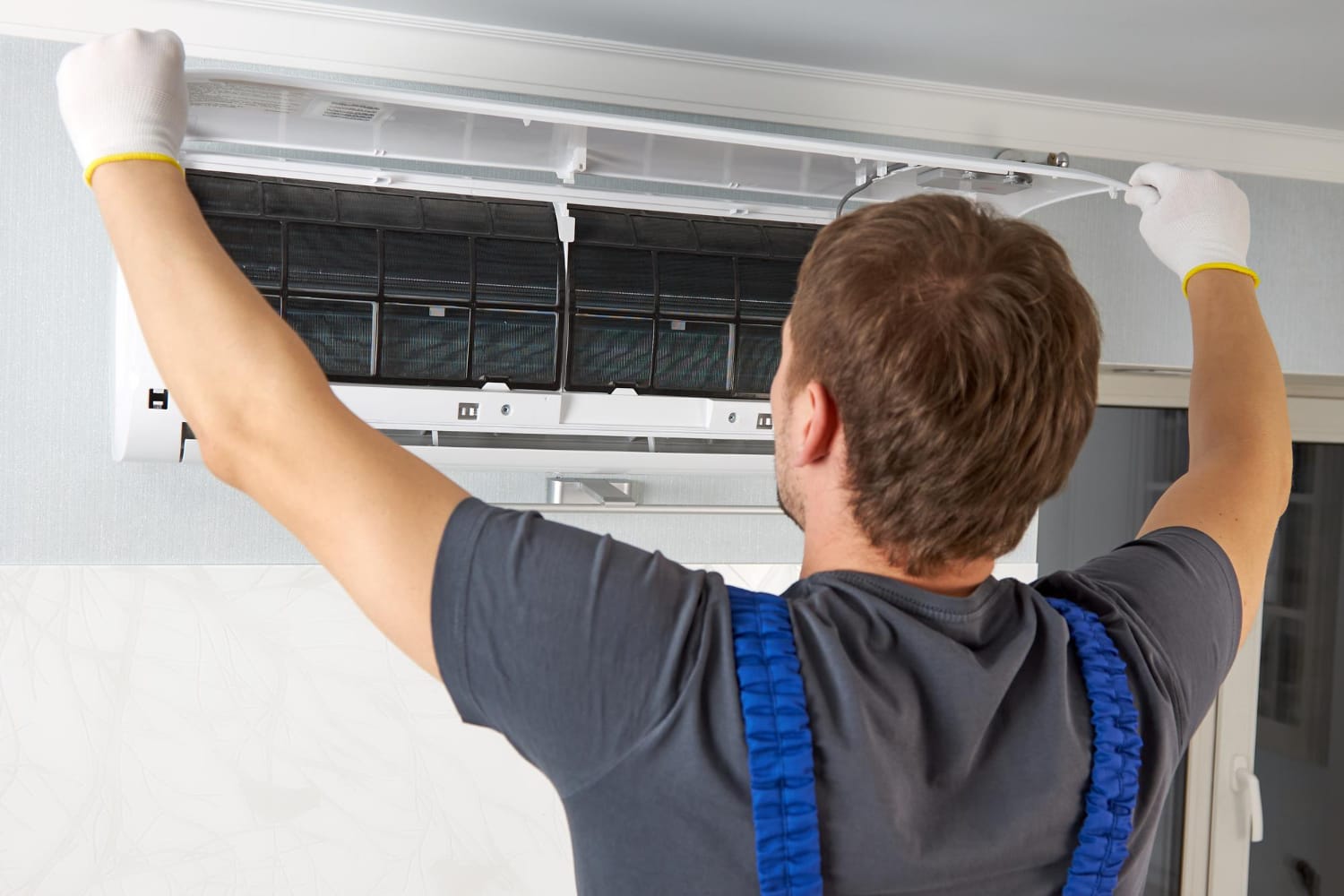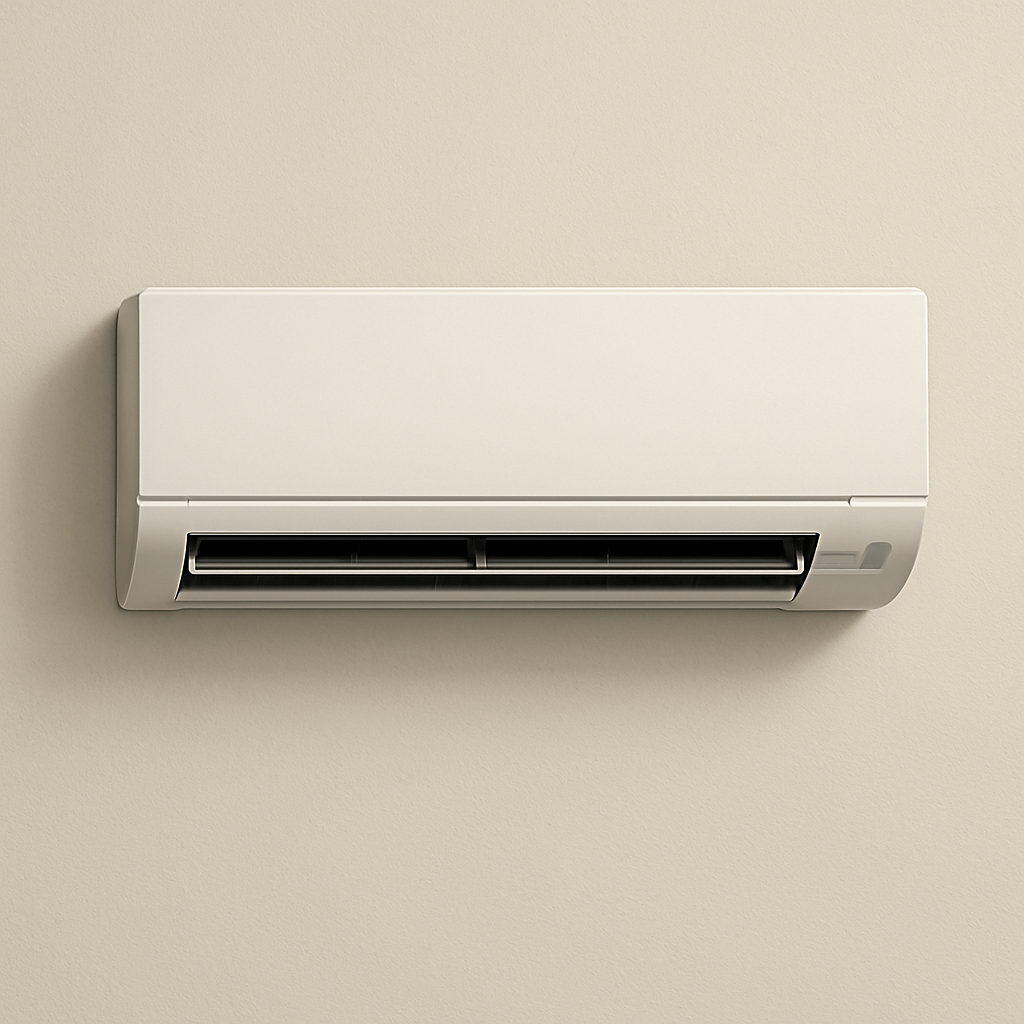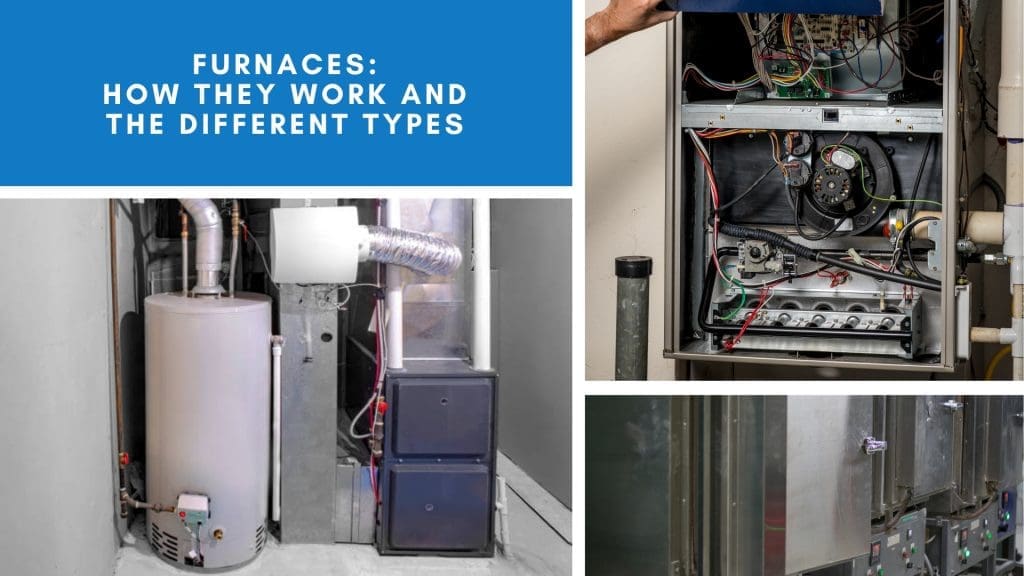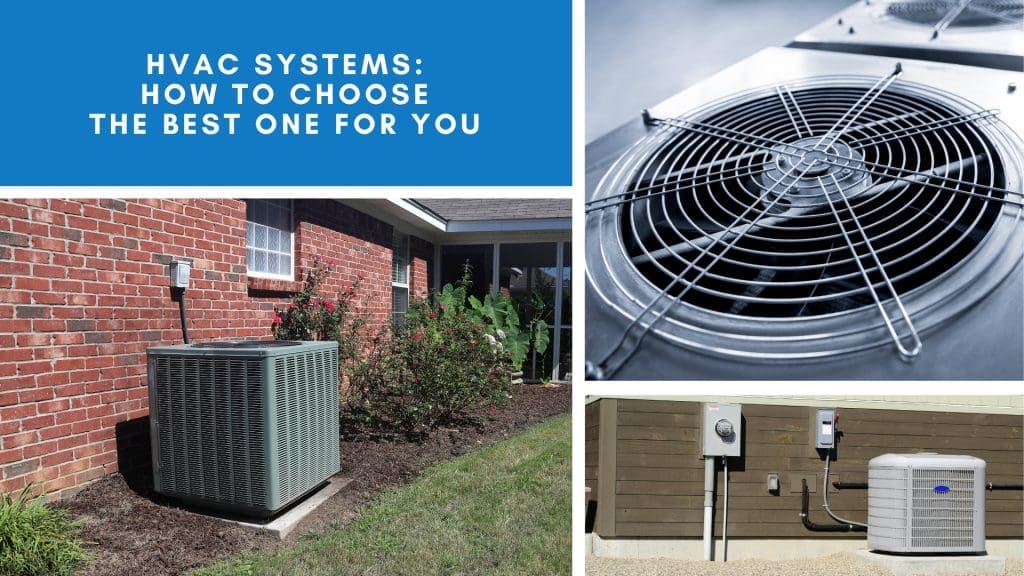When the temperature climbs and your air conditioning system refuses to cooperate, it can be more than just an inconvenience—it can be a source of significant discomfort. If you’re experiencing issues where your AC unit won’t start, you’re not alone. Many homeowners in the Los Angeles metropolitan area face similar challenges, especially during the peak of summer.
As an experienced HVAC professional, I’m here to guide you through some common reasons why your AC unit might not be turning on and provide you with actionable solutions.
Before diving into the potential problems, it’s essential to understand the basic components of your air conditioning system. The AC system consists of two main parts: the indoor unit, known as the evaporator, and the outdoor unit, which includes the condenser and compressor. Both units need to work in harmony for your AC to function correctly.
The Indoor Unit: Evaporator
The evaporator is located inside your home and is responsible for absorbing heat from the air. When the air passes over the evaporator coils, the refrigerant inside absorbs the heat, cooling the air before it’s circulated back into your home. If the evaporator coils are dirty or frozen, they can impede the cooling process.
The Outdoor Unit: Condenser and Compressor
The outdoor unit comprises the condenser and the compressor. The condenser releases the heat absorbed by the refrigerant to the outside air. If the condenser is blocked or dirty, it can’t efficiently release heat, affecting your system’s ability to cool. The compressor, on the other hand, is the powerhouse that moves refrigerant between the indoor and outdoor units. If the compressor fails, your AC won’t be able to cool your home.
Refrigerant’s Role in Cooling
Refrigerant is the lifeblood of your AC system. It cycles through the system, absorbing heat from inside your home and releasing it outside. If there’s a refrigerant leak or if the levels are low, the AC won’t be able to cool effectively, leading to increased energy consumption and decreased comfort. Common Reasons Your Outside AC Unit Won’t Turn On
Common Reasons Your Outside AC Unit Won’t Turn On
Let’s explore some of the most common reasons why your AC unit might not start, focusing primarily on the outside unit.
Power Supply Issues
One of the most straightforward issues to check is the power supply. Ensure that your AC unit is connected to a power source and that the circuit breaker has not tripped. Sometimes, a simple reset of the circuit breaker can solve the problem.
Inspecting the Breaker Box
Begin by checking your home’s breaker box. Locate the switch labeled for your AC unit and ensure it’s in the “on” position. If it has tripped, switch it off and back on again. Repeated tripping indicates a deeper electrical issue that may need professional attention.
Checking the Disconnect Box
The disconnect box is located near your outdoor unit and provides a way to manually cut power to the unit. Ensure the switch or fuse inside the disconnect box is intact and properly connected. Any signs of wear or damage here might require replacement.
Verifying Power Outlet Functionality
If your AC unit plugs into an outlet, test the outlet with another device to confirm it’s providing power. Sometimes, the issue can be as simple as a faulty outlet rather than a problem with the AC unit itself.
Thermostat Problems
The thermostat is the command center of your AC system. If it is not set correctly, the AC unit won’t start. Ensure your thermostat is set to the cooling mode and that the temperature is set lower than the current room temperature.

Calibrating Your Thermostat
Over time, thermostats can lose accuracy. Check if the thermostat is reading the room temperature correctly. If not, recalibration might be necessary. Some digital thermostats allow for easy recalibration through the settings menu.
Replacing Thermostat Batteries
If your thermostat is battery-powered, dead batteries can prevent it from functioning correctly. Replace the batteries and see if this resolves the issue. Low batteries can also affect the thermostat’s ability to maintain settings.
Upgrading to a Programmable Thermostat
Consider upgrading to a programmable or smart thermostat. These devices can optimize cooling schedules, enhance comfort, and improve energy efficiency by learning your patterns and adjusting settings automatically.

Troubleshooting the Compressor
If your AC compressor won’t kick on, several factors could be at play.
Overheating
During hot weather, the compressor can overheat and shut down to protect itself. In such cases, allow the unit to cool down for a while before attempting to restart it.
Symptoms of an Overheated Compressor
An overheated compressor may emit a burning smell or make unusual noises before shutting down. If you notice these signs, it’s crucial to turn off the system immediately to prevent further damage.
Preventing Overheating
To prevent overheating, ensure that your outdoor unit is shaded but not obstructed. Adequate airflow around the unit can help maintain optimal operating temperatures. Also, regular maintenance can identify potential overheating issues before they escalate.
Restarting After Overheating
After allowing the compressor to cool, try restarting the unit. If the problem persists, it may indicate a deeper issue that requires professional intervention to diagnose and fix.
Capacitor Issues
The capacitor provides the necessary jolt to start the compressor. If the capacitor is faulty, the compressor won’t start. Capacitors can wear out over time and may require replacement.
Identifying a Faulty Capacitor
A failing capacitor may cause the AC unit to hum without starting or cause it to start and stop intermittently. Visually inspect for signs of bulging or leaking, which indicate the need for replacement.
Replacing the Capacitor
Replacing a capacitor involves disconnecting power to the unit and carefully removing the old component. Due to the electrical risks, it’s recommended to have a professional handle this task to ensure safety and proper installation.
Regular Capacitor Maintenance
To extend the life of your capacitor, include it in your regular AC maintenance routine. Professionals can test the capacitor’s performance and replace it proactively if it’s nearing the end of its lifespan.
Electrical Problems
Loose or damaged wiring can also prevent the compressor from starting. Electrical issues should always be handled by a professional to ensure safety and proper repair.
Diagnosing Electrical Issues
Signs of electrical problems include flickering lights when the AC starts, frequent breaker trips, or visible wire damage. If you suspect an electrical issue, avoid DIY fixes due to the inherent risks.
Importance of Professional Diagnosis
Electrical problems can be complex and hazardous. A trained HVAC technician can accurately diagnose and repair electrical faults, ensuring the safety and reliability of your AC system.
Preventive Measures Against Electrical Failures
Regular inspections can catch potential electrical issues early. Ensuring that all connections are tight and free of corrosion can prevent many common electrical problems in AC systems.
Outdoor Unit Not Running? Here’s What to Check
When the outdoor AC unit is not running, it could be due to several causes.
Clogged Air Filters
Clogged air filters restrict airflow, causing the system to work harder and eventually overheat. Regularly checking and replacing air filters can prevent this issue.
The Impact of Dirty Filters
Dirty filters not only reduce airflow but also compromise indoor air quality. They can lead to allergens and dust circulating in your home, affecting comfort and health.
Choosing the Right Filter
Filters come in various types, from basic fiberglass to high-efficiency particulate air (HEPA) filters. Choose a filter that balances air quality needs with airflow efficiency for optimal performance.
Setting a Filter Replacement Schedule
Set reminders to check and replace filters every 1-3 months, depending on usage and filter type. Consistent replacement ensures your system runs efficiently and your indoor air remains clean.
Blocked Condenser Unit
Debris such as leaves, dirt, or grass can block the condenser unit, preventing it from releasing heat. Ensure the area around the condenser is clear to allow for proper airflow.
Cleaning the Condenser
Regularly clean the condenser unit by gently removing debris with a garden hose. Avoid using high pressure, which can damage the fins and affect performance.
Landscaping Tips for Optimal Airflow
Maintain a clear space of at least two feet around your condenser unit. Trim back plants and remove any obstructions to ensure adequate airflow and efficient operation.
Seasonal Checks for Debris Buildup
Inspect your condenser unit at the beginning and end of each cooling season. Clearing accumulated debris can prevent overheating and ensure your system is ready for peak demand.
Refrigerant Leaks
Low refrigerant levels due to leaks can prevent the AC system from cooling effectively. A professional HVAC technician should handle refrigerant issues, as they require specialized skills and tools.
Signs of a Refrigerant Leak
If your AC isn’t cooling properly, or if you notice hissing sounds or ice on the evaporator coils, a refrigerant leak may be the cause. These symptoms should prompt immediate attention from a professional.
The Risks of Handling Refrigerant
Refrigerant is hazardous and requires careful handling. Only certified technicians should manage refrigerant levels and leaks to ensure safety and compliance with environmental regulations.
Long-term Solutions for Leaks
Once a leak is identified and repaired, consider discussing long-term solutions with your technician. This might involve upgrading components or adopting a proactive maintenance plan to prevent future issues.
The Importance of Regular Maintenance
Regular maintenance is crucial in keeping your air conditioning system running efficiently. Scheduling annual check-ups with a trusted HVAC professional can help identify potential issues before they become major problems.
Benefits of Regular Maintenance
- Improved Efficiency: A well-maintained AC system operates more efficiently, reducing energy costs.
- Extended Lifespan: Regular maintenance can prolong the life of your AC unit, delaying the need for a costly replacement.
- Enhanced Comfort: Ensuring your system is in top shape provides consistent and reliable cooling.
Cost Savings from Maintenance
Regular maintenance can prevent costly repairs and breakdowns. By addressing minor issues early, you avoid more significant problems that can lead to expensive emergency services or replacements.
Maintenance Checklist
A comprehensive maintenance checklist includes inspecting electrical connections, checking refrigerant levels, cleaning coils, and testing system controls. These tasks ensure each component is functioning optimally.
Scheduling Professional Maintenance
Establish a maintenance schedule with a trusted HVAC provider. Bi-annual visits—once before cooling season and once before heating season—can keep your system in peak condition year-round.
When to Call a Professional
While some AC issues can be resolved with simple troubleshooting, others require the expertise of a professional. If you encounter any of the following situations, it’s time to call in the experts:
- Persistent problems with the compressor not turning on.
- Unusual noises or odors coming from the unit.
- Frequent cycling on and off of the system.
- Noticeable decrease in cooling efficiency.
Recognizing Signs of Trouble
Unusual noises, such as grinding or squealing, can indicate mechanical issues. Similarly, strange odors might suggest mold or electrical problems. These signs should prompt a professional inspection.
Avoiding DIY Pitfalls
Attempting DIY repairs on complex AC systems can lead to further damage or safety hazards. Professionals have the expertise and tools to diagnose and fix issues correctly, ensuring your system operates safely and efficiently.
Choosing the Right HVAC Professional
Select an HVAC professional with a solid reputation and appropriate certifications. Reviews, referrals, and verified credentials can guide you in choosing a reliable technician for your AC needs.
Conclusion
Understanding why your AC unit won’t start can be a daunting task, but with the right knowledge, you can troubleshoot some common issues. However, many homeowners prefer to rely on professionals to handle their HVAC needs. At LC Heating and Air Conditioning, we pride ourselves on providing top-quality service to the Los Angeles community. Whether you’re dealing with a stubborn AC unit or need routine maintenance, we’re here to help.
For reliable HVAC service, don’t hesitate to reach out to us at http://www.lahvaclc.com or call (818) 858-7080. Your comfort is our top priority, and we’re committed to ensuring your home stays cool and comfortable all year round.



